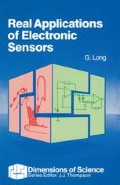Abstract
In the early 1970s there were few electronics circuits in use on the average farm, except perhaps for electric fences. The idea of introducing anything so unreliable and delicate into such a tough environment would have been considered ridiculous. People were suspicious of new fangled gadgets and the days of delicate glass valves with high internal voltages were only just receding. Electronically controlled fences were probably accepted because they had to generate high voltages to give an electric shock and, as they were not shaken by being mounted on moving machinery but left quietly alone in the corner of fields, they were reliable. It was the coming of good-quality printed circuit boards, much lower operating voltages and cheap transistors which enabled rugged, low-cost electronic sensors to be produced.
Preview
Unable to display preview. Download preview PDF.
Author information
Authors and Affiliations
Copyright information
© 1989 Graham Long
About this chapter
Cite this chapter
Long, G. (1989). Potatoes and Diamonds. In: Real Applications of Electronic Sensors. Dimensions of Science. Palgrave, London. https://doi.org/10.1007/978-1-349-10107-8_2
Download citation
DOI: https://doi.org/10.1007/978-1-349-10107-8_2
Publisher Name: Palgrave, London
Print ISBN: 978-0-333-46107-5
Online ISBN: 978-1-349-10107-8
eBook Packages: EngineeringEngineering (R0)

